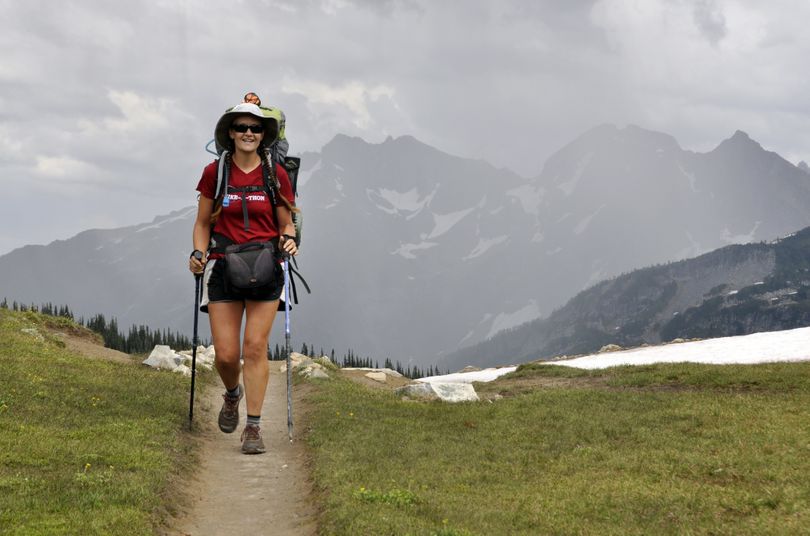When it comes to media freedom in wilderness, give a damn

PUBLIC LANDS -- I was a bit surprised at some comments I received this week after posting news that U.S. Forest Service officials were forging rules requiring "the media" to obtain $1,500 permits in order to make photographs in designated national forest wilderness areas.
A federal spokesperson originally suggested the permits, which could be denied for unspecified reasons, are necessary under public land protections guaranteed by the 1964 Wilderness Act.
A few of you suggested that would be OK.
I suppose those comments were geared to newspapers and TV reporters -- like who cares.
But maybe it applies to Miley Cyrus, who reaches more people with one social "media" tweet than all the reporters in Washington state combined. Maybe it means guidebook writers or mapmakers. Maybe it applies to you.
Unless you flunked American History, the reason for the First Amendment, or don't pay attention to world news about countries that are freedom-poor because they have no freedom of the press, you should at least have a clue.
NO NEWS, YOU LOSE.
Here's the latest on the outrage the Forest Service rules have stirred:
Forest Service says media doesn’t need permit
By PHUONG LE / Associated Press
SEATTLE — Faced with increasing criticism of a proposal that would restrict media filming in wilderness areas, the head of the U.S. Forest Service said late Thursday that the rule is not intended to apply to news-gathering activities.
The rule would apply to commercial filming, like a movie production, but reporters and news organizations would not need to get a permit to shoot video or photographs in the nation’s wilderness areas, Forest Service Chief Tom Tidwell said in a phone interview Thursday.
“The U.S. Forest Service remains committed to the First Amendment,” he said, adding: “It does not infringe in any way on First Amendment rights. It does not apply to news-gathering activities, and that includes any part of news.”
Forest Service officials had said earlier in the week that news organizations, except in breaking news situations, would be required to obtain a permit and follow a number of criteria if they wanted to film in designated wilderness areas.
At least two public TV stations, in Idaho and Oregon, said they have been asked to obtain a permit before filming their programs in wilderness areas. Press advocates criticized the proposed rules as a violation of the First Amendment, saying it raises concerns about press freedom.
“I understand what he’s saying the intent is, but the language doesn’t not reflect that intent,” Mickey Osterreicher, general counsel for the National Press Photographers Association, said Thursday in response to Tidwell’s comments.
“If they’re serious about it, they need to craft unambiguous language that exempts news-gathering if that’s their alleged intent, so there’s no question that someone out on a news story wouldn’t have a ranger or other employee saying ‘You need a permit’,” Osterreicher said.
Osterreicher noted that the proposal clearly refers to permits for still photography, but Tidwell said Thursday that “the intent is not for it to apply to still photography.” When this discrepancy was raised to him, Tidwell said: “This is an example of where we need to clarify.”
Tidwell said the agency wants feedback to help make sure the rules are clear and consistent.
Professional and amateur photographers will not need a permit unless they use models, actors, props; work in areas where the public is generally not allowed; or cause additional administrative costs, the agency said in a release.
Tidwell acknowledged that fees are applied differently by the agency across the country. He said the goal is to have a consistent approach to permitting commercial filming activities.
Commercial-filming permits currently run anywhere from $30 a day for up to three people to as much as $800 per day for production involving dozens of people.
A separate proposal would charge as much as $1,500 for the bigger film productions involving dozens of people on federal lands.
The plan “is a good faith effort to ensure the fullest protection of America’s wild places” and has been in place for more than four years, Forest Service spokesman Larry Chambers said in a statement earlier Thursday.
Tidwell, whose agency manages nearly 190 million acres of public lands in national forests and grasslands, including 439 wilderness areas, said he welcomed feedback from the public at meetings to help craft clearer rules. The comment period has been extended through Dec. 3.
Under the rules, permit applications for commercial filming would be evaluated based on several criteria, including whether it spreads information about the enjoyment or use of wilderness or its ecological, geological, scientific, educational, scenic or historical values; helps preserve the wilderness character; and doesn’t advertise products or services. Officials also would consider whether other suitable film sites are available outside the wilderness.
One more observation, this one from Ken Paulson of the First Amendment Center and dean of the College of Mass Communication at Middle Tennessee State University:
"It would be hard to defend the constitutionality of this regulation. You simply cannot give government officials the power to decide what gets covered. It’s actually astonishing to me no one in the agency raised the question of whether this might blatantly violate the First Amendment."
